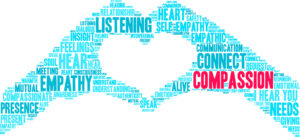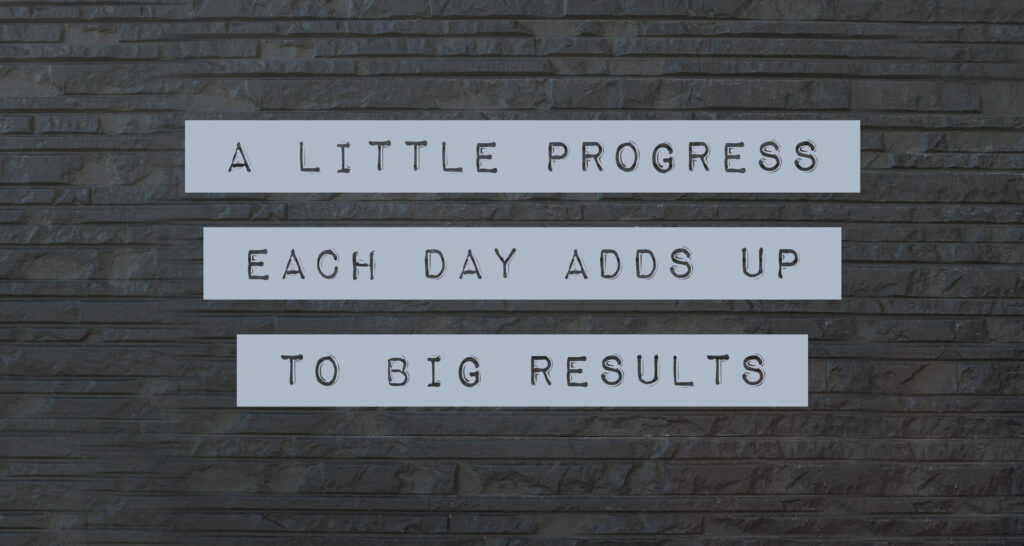
We often hear the expression, “I am sick of the drama.” Yet what does that mean exactly? Emotional drama has a number of definitions. In a survey conducted about drama, the biggest finding was the experience of the observer and the impact of drama on relationships. Whether the relationships were at work or outside of work what was expressed by respondents was the toll that drama was taking on them emotionally as well as on the relationship. All the descriptions were negative in nature with a few individuals even reporting what happens to them as they engage in drama themselves. Drama in the workplace has reached elevated levels as individuals strain to address and cope with feelings that emerge. This leave leaders in an unenviable position of finding resources and processes for coaching individuals and teams through drama episodes.
The Drama Cycle
There is a cycle that emerges with emotional drama. Emotional drama starts with the individual’s experience of a thought, situation, or another person followed by a negative interpretation of the experience. As the individual energizes the interpretation (meaning) in a negative framework and continues thinking about the thought, experience, or event an intensity begins to build. This intensity adds fuel to the fire which results in an intense emotional hit. This hit leads to an attempt to make sense of what is happening to the individual resulting in a story about the thought, experience, or event. If the story becomes too difficult to contain, the individual (sender) will seek someone out to share the story with. The intention of sharing the story is “hooking” the receiver into believing the reality of the sender. When the receiver is hooked the cycle begins again with the with the receiver now becoming the sender to others.
Thoughts, Experiences and Events
Together, thoughts, experiences, and events form the fabric of human existence, influencing our perceptions, emotions, behaviors, and interactions with the world around us. They are interconnected and constantly evolving, contributing to the rich tapestry of human consciousness and existence.
Although not every thought, experience or event is negative, we tend to view them as threats until we are able to reframe them as nonthreatening. Dr. Rick Hanson in “Hardwiring Happiness” Change Your Brain and Your Life - Dr. Rick Hanson shares that our experiences are shaped by the thinking of our early ancestors. For these individuals, determination about whether the situation being faced was a threat to survival or was harmless needed to happen quickly. For expedience’s sake, most situations tended to be evaluated as negative before they were deemed safe. When we experience people, situations, or thoughts as negative there is typically a judgment or negative meaning assigned to them. In the meaning making models, this is called a discrepancy between the world we are experiencing and the world we want to experience.
Another form of experience is “emotional noise” which can also be a result of thinking. "Emotional noise" is a term that describes the interference or disruption caused by excessive or overwhelming emotions in decision-making, communication, and cognitive processes. In discussing noise Shawn Achor in “Before Happiness,” Shawn Achor – Bringing the science of happiness to life offers that noise is information that is unusable, untimely, or hypothetical. However, he contends that our own negative thinking is the most dangerous type of noise. Negative thinking can turn into negative messages to self in the form of self-talk. Self-talk is a term that refers to the voices that chatter away in our heads. For example, when you wake up each morning and look into the mirror, what are you saying to yourself? Is this going to be the best day ever or are there numerous changes that must be made to appearance, other people or just life in general to be happy? Negative self-talk can interfere with performance, damage relationships, erode self-esteem and leave you drained of energy.
Meaning Making
"Meaning making" is the next step in the cycle. It refers to the cognitive and psychological process through which individuals construct or derive meaning from their experiences, beliefs, values, and interactions with the world around them. It is a fundamental aspect of human cognition and existential exploration, allowing individuals to interpret and understand their lives in meaningful ways.
Things become meaningful when we understand how we feel, think, and act and then align our behaviors with our feelings, thoughts, and actions shares Reinhard Stelter in “The Art of Dialogue in Coaching: Towards Transformative Exchange.” The Art of Dialogue in Coaching | Institute of Coaching The meaning making process begins with an examination of our values which are central to our identity. When the meaning making process is working effectively, individuals can step away from what is immediately in front of them to create moments of understanding and deepening self-awareness. However, when a gap exists between what is wanted and expected and what is happening a faulty evaluation might be created leading to an emotional hit often referred to as a “trigger”.
The Emotional Hit
David Richo in “Triggers: How We can Stop Reacting and Start Healing” David Richo | Books, Video, CDs on Personal and Spiritual Unfolding (davericho.com) defines a trigger as “any word, person, event or experience that touches off an immediate emotional reaction”. Emotions being felt run the gamut of a range of emotions which include anger, fear, panic, humiliation and even shame. The author shares that “trigger” is an appropriate term for what is happening as the “gun” is in the hands of someone else.
Learning to name and understand what is being felt emotionally is the work of every individual. Marc Brackett in “Permission to Feel” Home - Marc Brackett offers that all emotions provide individuals with information that allows for focusing and narrowing attention. As has been discussed, emotions arise from appraisal of internal or external stimuli be they thoughts, experiences, or people. Brackett also believes that suppressing feelings only strengthens them and that only through engaging in a process that recognizes, understands, labels, expresses, and then regulates can we become proficient in addressing our emotions.
Constructing the Story
Stories are a way that we make sense of what is happening in our lives. The stories start with us. The stories we tell ourselves, often referred to as self-narratives or self-talk, are the ongoing internal monologues and narratives that shape our beliefs, perceptions, and self-identity. These stories are the way we interpret and make sense of our experiences, both past and present. When personal stories go awry, they can have significant implications for an individual's sense of self, well-being, and relationships.
When individuals experience intense or strong emotions, they often look for an outlet through a story. Jim Loehr in “The Power of Story” Books | Jim Loehr Performance Psychologist (jim-loehr.com) shares that stories are how individuals communicate with self and others. "Your story is your life," says Loehr. As human beings, individuals continually tell stories -- of success or failure; of power or victimhood; stories that endure for an hour, or a day, or an entire lifetime. There are stories about work, families and relationships, health; about what is desired and how capabilities match those desires. Yet, while stories profoundly affect how others see us and we see ourselves, too few of us even recognize that we are telling stories, or what they are, or that we can change them -- and, in turn, transform our very destinies.
Giving the Story Away
 When discussing emotional drama, "giving the story to others" implies communication, connection, and the transfer of information, emotions, or ideas from one person to another. It is when the feelings become too intense for individuals to keep what is happening to themselves, they feel the need to “give it away”. Venting emotions with the sole intention of seeking agreement from others can be counterproductive and may not lead to effective resolution or emotional regulation. While it is natural to seek validation and support from others, venting primarily to gain agreement may reinforce negative emotions rather than helping to address underlying issues.
When discussing emotional drama, "giving the story to others" implies communication, connection, and the transfer of information, emotions, or ideas from one person to another. It is when the feelings become too intense for individuals to keep what is happening to themselves, they feel the need to “give it away”. Venting emotions with the sole intention of seeking agreement from others can be counterproductive and may not lead to effective resolution or emotional regulation. While it is natural to seek validation and support from others, venting primarily to gain agreement may reinforce negative emotions rather than helping to address underlying issues.
Intervening
The points of intervention in emotional drama begin with the thought, experience, or event. Learning to be the observer of these situations instead of the participant can prevent the igniting of the cycle. Next the individual can evaluate the meaning being made for accuracy by asking what other explanations are possible. It is a little more difficult to intervene as intense emotions are being felt yet using Marc Brackett’s RULER technique is a solid resource for emotional processing. Finally, the individual can engage in activities that limit the need to share the story such as journaling or brisk exercise.
If this topic resonated with you, please join us on March 6 for a webinar that will expand upon Emotional Drama and provide resources that will help coaches and leaders address the issue. Join the conversation with this Zoom link: https://us02web.zoom.us/j/89476852391
 The field of coaching continues to evolve as research informs practice and client needs take center stage. One recent evolution is called “third generation” coaching. This includes the shift to embracing “thinking partnerships” with clients rather than being experts and advisors. It is also slowing down from a solution focus and taking time to explore who the client is, based on values and understanding the meaning clients make from those values. Instead of simply focusing on a goal, clients are also focusing on passion and purpose which requires coaches to use a different yet complementary set of skills when coaching. The intersection of compassionate coaching, eclectic coaching, third-generation coaching, and vertical development represents the highlights of the thinking partnership as it offers a comprehensive and integrated approach to personal and professional growth that encompasses cognitive, emotional, relational, and systemic dimensions.
The field of coaching continues to evolve as research informs practice and client needs take center stage. One recent evolution is called “third generation” coaching. This includes the shift to embracing “thinking partnerships” with clients rather than being experts and advisors. It is also slowing down from a solution focus and taking time to explore who the client is, based on values and understanding the meaning clients make from those values. Instead of simply focusing on a goal, clients are also focusing on passion and purpose which requires coaches to use a different yet complementary set of skills when coaching. The intersection of compassionate coaching, eclectic coaching, third-generation coaching, and vertical development represents the highlights of the thinking partnership as it offers a comprehensive and integrated approach to personal and professional growth that encompasses cognitive, emotional, relational, and systemic dimensions. Vertical development in organizations refers to the process through which individuals, teams, and entire organizations evolve and mature in their cognitive, emotional, and moral capacities. Unlike horizontal development, which involves acquiring new skills or knowledge within a particular domain, vertical development entails progressing to higher stages of complexity, depth, and maturity in how individuals and groups make sense of themselves, others, and the world around them. Vertical development in organizations focuses on leadership development, organizational culture, team dynamics, change management, performance management and learning and development programs at every level.
Vertical development in organizations refers to the process through which individuals, teams, and entire organizations evolve and mature in their cognitive, emotional, and moral capacities. Unlike horizontal development, which involves acquiring new skills or knowledge within a particular domain, vertical development entails progressing to higher stages of complexity, depth, and maturity in how individuals and groups make sense of themselves, others, and the world around them. Vertical development in organizations focuses on leadership development, organizational culture, team dynamics, change management, performance management and learning and development programs at every level.


 Cultivate Gratitude. Cultivate a daily practice of gratitude to shift your focus from what is lacking to what is abundant in your life. Gratitude can help you maintain a positive mindset and overcome feelings of scarcity or inadequacy.
Cultivate Gratitude. Cultivate a daily practice of gratitude to shift your focus from what is lacking to what is abundant in your life. Gratitude can help you maintain a positive mindset and overcome feelings of scarcity or inadequacy.
 Fans can energize us or drain us. Have you ever noticed how certain people draw others to them. They are typically upbeat, charismatic, positive and energizing. They leave us excited about our own potential and possibilities. In his books
Fans can energize us or drain us. Have you ever noticed how certain people draw others to them. They are typically upbeat, charismatic, positive and energizing. They leave us excited about our own potential and possibilities. In his books 



 Milestones are critical to achieving goals for several reasons. They serve as intermediate targets that help guide progress, maintain motivation, and ensure that efforts are aligned with the ultimate goal. In addition, they provide structure and clarity while allowing for the tracking of progress. Milestones break down goals into even smaller, more manageable parts. This structure makes it easier to understand what needs to be done and in what order, providing a clear roadmap to follow. They also act as checkpoints that allow individuals to measure their progress. By regularly reaching milestones, individuals can see tangible evidence of their advancement toward the ultimate goal. A benefit to setting milestones is that large goals can often seem overwhelming. Milestones provide a feeling that the goal is more achievable, reducing anxiety and making it easier to start and continue working towards the goal. Finally, milestones help with time management by dividing the overall timeline into smaller segments. This makes it easier to allocate time effectively and ensure that steady progress is being made.
Milestones are critical to achieving goals for several reasons. They serve as intermediate targets that help guide progress, maintain motivation, and ensure that efforts are aligned with the ultimate goal. In addition, they provide structure and clarity while allowing for the tracking of progress. Milestones break down goals into even smaller, more manageable parts. This structure makes it easier to understand what needs to be done and in what order, providing a clear roadmap to follow. They also act as checkpoints that allow individuals to measure their progress. By regularly reaching milestones, individuals can see tangible evidence of their advancement toward the ultimate goal. A benefit to setting milestones is that large goals can often seem overwhelming. Milestones provide a feeling that the goal is more achievable, reducing anxiety and making it easier to start and continue working towards the goal. Finally, milestones help with time management by dividing the overall timeline into smaller segments. This makes it easier to allocate time effectively and ensure that steady progress is being made.